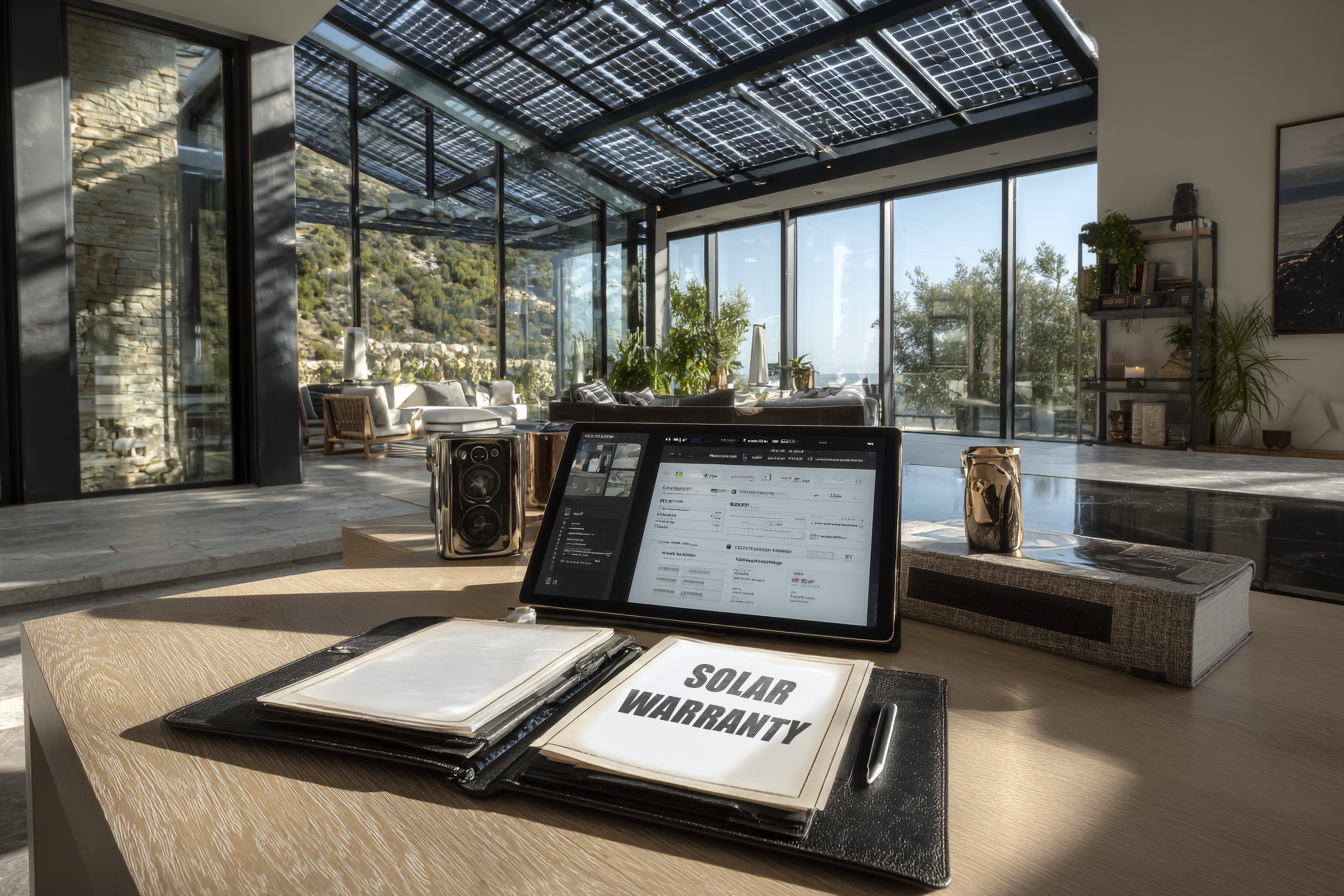What Does Your Solar Warranty Actually Cover? A Canadian Homeowner’s Guide

Written by Solenery
2 min read
Introduction
You’ve invested thousands in a rooftop solar system—but what happens if something goes wrong?
Will your warranty cover a failed panel? A glitchy inverter? A bad install?
For Canadian homeowners, understanding your solar warranty is just as important as picking the right panels.
In this guide, we’ll break down the key types of solar warranties available in Canada, explain what they really cover, and show you how to avoid common pitfalls that can void your protection.
Whether you’re in Alberta with high solar yield or Ontario navigating net metering, this post will help you protect your investment for the long haul.
The Three Core Warranties Every Solar Owner Should Know
Most residential solar systems in Canada are covered by three distinct warranties:
| Type | Covers | Typical Term |
|---|---|---|
| Product Warranty | Manufacturing defects (e.g., panel crack) | 10–15 years |
| Performance Warranty | Output degradation (e.g., <80% after 25 yrs) | 25–30 years |
| Workmanship Warranty | Installer labour, roof penetrations, wiring | 1–10 years |
Example:
A solar panel may guarantee no more than 0.5% power loss per year—if it underperforms, you may be eligible for a replacement or refund.
What’s Actually Covered—And What’s Not?
Typically covered:
Defective solar cells or microinverters
Loose wiring or faulty racking (workmanship)
Output that drops below promised levels (performance)
Physical damage caused by poor installation
Not covered:
Storm, hail, or fire damage (home insurance covers this)
Acts of vandalism or theft
Damage from DIY modifications or unapproved accessories
Poor cleaning or maintenance practices
Saskatchewan Tip:
Dust storms and snow buildup don’t void your warranty—but using a pressure washer might.
Always follow manufacturer cleaning instructions.
How to Keep Your Warranty Valid
Don’t risk losing coverage because of a technicality.
Here’s how to stay protected:
Use a certified installer (e.g., CSA/CanSIA member)
Register your panels, inverter, and battery with the manufacturer
Schedule periodic maintenance (and document it)
Avoid unauthorized electrical work
Keep your warranty documents and installation receipts in one place
Quebec homeowners:
Be cautious when hiring out-of-province installers—some manufacturer warranties require installers to be certified in Quebec specifically.
What About Batteries, Inverters, and Monitoring Systems?
These often have different terms:
| Component | Warranty Term | Notes |
|---|---|---|
| String Inverters | 10–12 years | Some brands offer optional 20–25 year extensions |
| Microinverters | 20–25 years | Typically match panel life |
| Batteries (e.g. Tesla, LG) | 10–15 years | Performance and capacity thresholds apply |
| Monitoring System | 1–5 years | Often not critical to system function |
BC homeowners:
If you install a battery with BC Hydro’s backup incentive, make sure both battery and solar are registered for rebate and warranty tracking.
Solar & Home Insurance: Are You Covered?
Most Canadian home insurance policies do cover rooftop solar panels automatically—but coverage limits and deductibles vary.
What to confirm with your insurer:
Are rooftop panels covered under your dwelling policy?
Will premiums rise due to system value?
Are weather-related claims (hail, wind) included?
Do you need to list equipment separately (e.g. inverter, battery)?
Nova Scotia homeowners:
If you lease your system, check who’s liable for insurance—the leasing company or you.
Conclusion
Your solar warranty is more than just a piece of paper—it’s your long-term safety net for performance, equipment, and installation quality.
By understanding what’s covered (and what isn’t), registering your products, and working with licensed professionals, you can safeguard your solar investment and avoid unexpected repair bills.